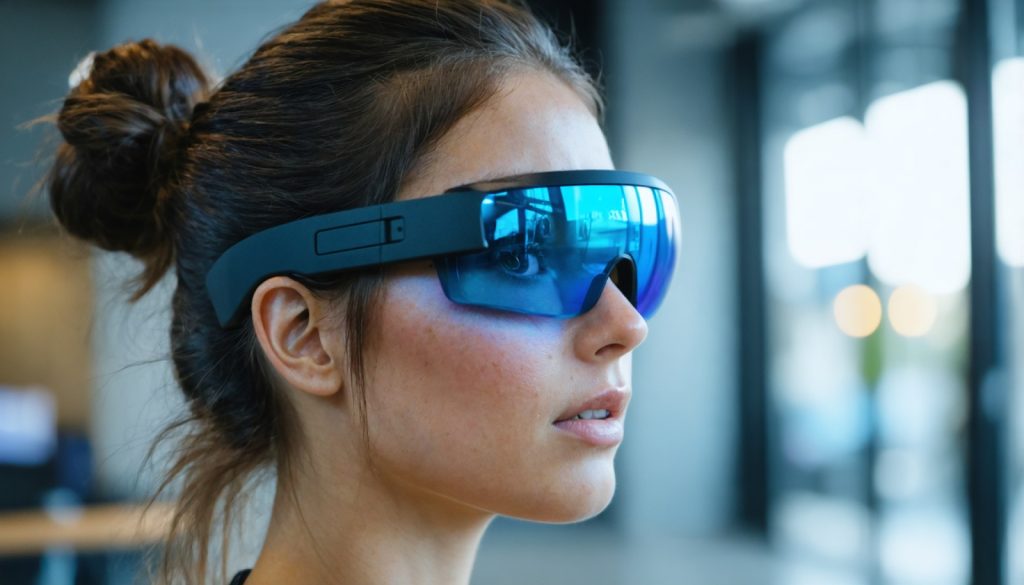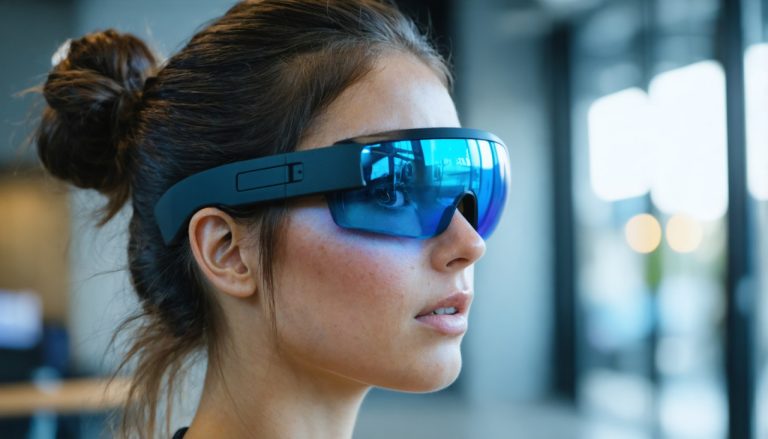
- Augmented reality (AR) glasses like the ENGO 2 are seen as potential game-changers in fitness, offering real-time data without needing to check a wristwatch or bike computer.
- ENGO 2 glasses are designed primarily for cyclists, boasting a lightweight design with holographic capabilities, though some comfort and focus issues remain.
- While currently hindered by challenges like limited field of view and finicky interface, the glasses hint at promising potential for seamless tech integration in fitness.
- The glasses target simple, efficient data access mid-activity, yet traditional smart features like cameras or auditory aids are missing.
- As major tech companies explore the AR landscape, questions arise on the balance between high-tech innovation and maintaining running’s meditative simplicity.
On a crisp morning, the path unfurled before me like a canvas waiting to be painted by the rhythm of my feet. As I charged up the incline, augmented reality glasses perched on my nose transformed from an accessory into a potential game-changer in the world of fitness. With every stride, vital stats—my heart rate, pace, and power—ghosted into view, powered by my trusty Garmin Fenix 8. It felt like stepping into a futuristic realm where technology promised to unshackle us from the old constraints.
These aren’t just any glasses. The ENGO 2 AR glasses boast a featherlight design, weighing in at a mere 36–41 grams, lighter than Meta’s Ray-Bans but packed with holographic capabilities. Designed primarily for cyclists, these glasses aim to deliver real-time data without the need to check a wristwatch or handlebar computer. Yet, as I pounded the trails, I couldn’t help but question if these smart glasses were a beacon of motivation or a colorful distraction.
While donning ENGO’s creation, I was met with the realization of how nascent this technology is. The weight distribution gravitates toward the nose pads, causing an unsettling slide with every vigorous move. Peering through the HUD challenged my focus, offering a limited field of view that required constant adjustments. The ambition to merge simplicity with performance turned apparent through its 12-hour battery life, although this endurance came at the expense of traditional smart features like cameras or auditory aids.
The forefront of technology has always been rife with trials and tribulations. Tinkering with motion-controlled sensors, I waved my hand in exasperation, trying to coax a response from the finicky interface. Each swipe felt less intuitive than the last, veering my attention away from the path that demanded respect and vigilance.
Despite these quirks, the concept dangles tantalizing potential within reach. Imagine seamless tech integration, where a mere tap of fingers mid-stride reveals an instantaneous pulse of your heart rate or the efficiency of your stride—without the cumbersome act of averting eyes from where they matter most. With titans like Meta, Google, and Samsung dipping toes into the AR landscape, dreaming of glasses that offer this precision without sacrificing comfort and safety is more plausible than ever.
Yet, the poignant question prevails: Is this a leap worth taking, or does it trail as a luxury of novelty? With data dancing across our vision, are we empowered to perform, or do we risk losing the meditative simplicity that makes running the purest form of human expression? As tech giants drift towards reimagining reality, athletes and enthusiasts alike must decide if tethering their athletic endeavors to this high-tech promise brings unparalleled insight or remains a glance too far.
The Future of Fitness: Are Augmented Reality Glasses Really Worth the Investment?
Exploring the Potential and Limitations of AR Glasses in Fitness
Augmented Reality (AR) glasses like the ENGO 2 are pioneering a new frontier in personal fitness technology. These featherlight glasses, designed primarily for cycling, aim to deliver real-time data, helping athletes keep their eyes on the road instead of on a wristwatch or handlebar-mounted computers. But are these futuristic gadgets genuinely transforming how we engage with our workouts? Let’s delve deeper beyond the surface features to explore the pros, cons, and future implications of AR glasses in fitness.
Features & Technical Specifications
1. Lightweight Design: Weighing just 36–41 grams, the ENGO 2 AR glasses are lighter than many competitors, such as Meta’s Ray-Bans, making them less burdensome during extended wear.
2. Vital Stats Display: Features real-time display of heart rate, pace, and power through a holographic heads-up display (HUD). This potentially increases awareness of performance metrics without diverting attention from the activity.
3. Battery Life: Offers up to 12 hours of use without needing recharging. However, this endurance comes at the cost of omitting features like cameras or integrated audio systems common in other smart glasses.
4. Control Mechanism: Utilizes motion-controlled sensors for interface navigation, a concept that still feels less intuitive and can be distracting during intense activity.
Real-World Use Cases
– Cycling and Running: These glasses are optimized for cyclists but can be beneficial for runners who want to maintain awareness of performance metrics in real-time.
– Marathon Training: Allows athletes to optimize training sessions by constantly monitoring heart rate zones for efficiency.
– Virtual Coaching: Future iterations might integrate virtual coaching features based on performance and biometrics feedback, enhancing real-time guidance.
Pros & Cons Overview
– Pros: Enhance situational awareness with real-time data delivery, featherweight design reduces physical exertion, hands-free operation focuses on the activity.
– Cons: Potentially distracting HUD requires constant adjustment, unrefined motion control interface, and limited field of view.
Industry Trends and Market Forecasts
The fitness technology sector is rapidly integrating AR and VR technologies, with major companies like Meta, Google, and Samsung actively developing their versions. According to a report by MarketsandMarkets, the AR and VR market is projected to grow from $14.7 billion in 2020 to $72.8 billion by 2024. As adoption increases, we can expect innovation in user interfaces, battery performance, and data integration.
Pressing Questions and Answers
– Are AR glasses safe for athletic use?
– While they provide real-time data, the HUD can be distracting and may not be suitable for high-risk or group activities.
– Do these replace traditional fitness trackers?
– While they offer immediate data access, they do not replace the comprehensive data analysis and functionality of full-fledged fitness trackers.
– How do they compare to competitors?
– Competitors may offer more features like audio integration or photography but often at the expense of battery life and weight.
Conclusion and Quick Tips
1. Test Before You Invest: These glasses are best evaluated during a short-term trial, preferably during your usual workout routine to ensure they meet personal expectations.
2. Balance Tech with Focus: Use these devices in environments where you can maintain concentration on safety and surroundings.
3. Stay Updated: With AR technology rapidly evolving, watch for updates and new releases, as more comfortable and intuitive versions are likely on the horizon.
For further reading on augmented reality developments and applications, visit Meta and Samsung.



